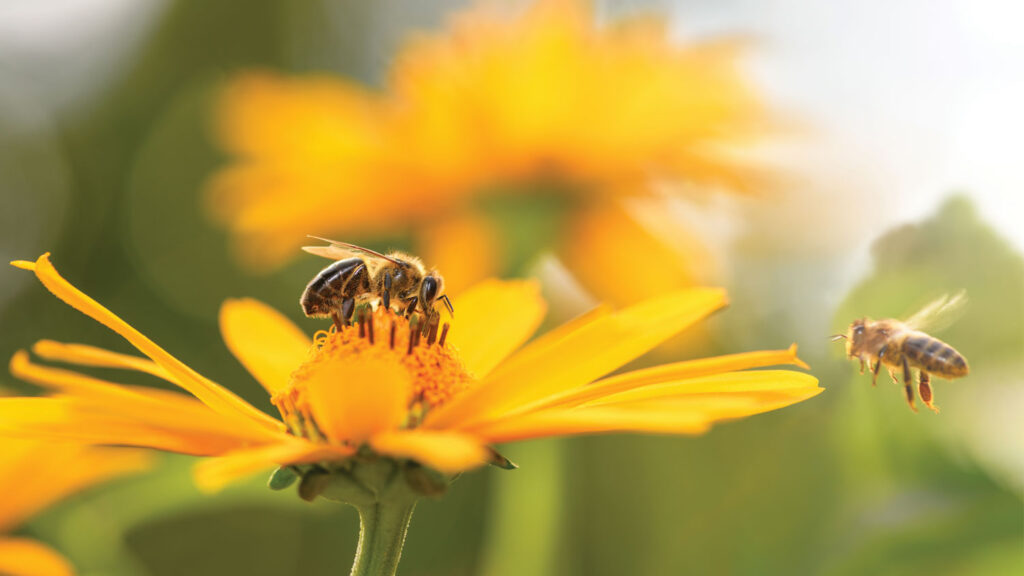Be a Friend to Bees
By Avery Walker

Bees are fascinating creatures. Honeybees use complex “dances” to communicate and can fly up to 20 miles per hour. Visiting hundreds of flowers every day, bees are tireless workers, and the only insects in the world that make food that humans can eat. According to the National Wildlife Federation, many species of bees in the U.S. are declining, while some have even reached endangered levels. In addition to providing us with tasty honey, these busy workers are essential to the survival of native plants, animals, and even humans. Many initiatives have begun to work toward the preservation of bees, but what can we do on an individual level to help our pollinating friends?
Plant a Bee-Friendly Garden
Planting a flower garden is not only a favor to bees, but also to yourself. While you enjoy beautiful blossoms all season long, bees are able to feed themselves for the entire year. Consider setting aside a portion of your lawn for a wildflower garden, or you can design a structured garden with colorful, pollen-rich plants. Choosing native plants makes it easy to create a beautiful garden that will thrive with very little maintenance. The blossoms will often attract other garden friends as well, like butterflies and hummingbirds.
Say No to Pesticides
There are many organic solutions to lawn and garden pests that are not fatal to bees, rather than synthetic pesticides that are harmful to bees and humans alike. Certain types of compost will even deter destructive insects from visiting your garden. Take the time to research methods that work for your space and budget. The bees will thank you, and so will your plants, which rely on pollination to thrive.
Give the Bees a Drink
Everyone needs a cool drink of water on a hot summer day, and bees are no exception to this. It is easy to create a small oasis for pollinators. Simply find a shallow dish, such as a clay saucer or small bird bath, and fill it with stones or marbles. Fill the dish with clean water, allowing the stones to break the surface of the liquid so the bees can land safely to access the water. Make sure to change the water regularly, to deter mosquitos and bacteria growth.
Do Not Fear the Swarms
If you see a buzzing mass of bees swarming together on a tree trunk, do not call an exterminator—call a beekeeper! Swarms are a natural part of a healthy bee population. Usually happening in the spring when flowers are beginning to bloom, swarms of bees that have broken off to form a new hive can be seen hunting for their new home. These bees are not usually as defensive as those protecting an established hive, but you should still be cautious about approaching a swarm, and let a trained beekeeper handle the transfer.
Support Your Local Beekeeper
The benefits of local, organic honey are no secret. Honey itself is a great natural sweetener and has even been known to combat seasonal allergies when the honey has been made from local sources of pollen. The uses of honey and the honeycomb go far beyond its natural state, including soaps, lotions, balms, and salves. You can find many of these products at your local farmer’s market, sold by the people who know the bees personally!
When you help the bees, you help more than just the pollinators themselves. You are helping farmers who rely on pollinators for bumper crops. You are helping to ensure the survival of the trees and flowers we love to look at and depend on for oxygen. Keep an eye out for these busy and essential insects this spring and consider what you might be able to do in order to give back to the bees.


One comment on “Be a Friend to Bees”